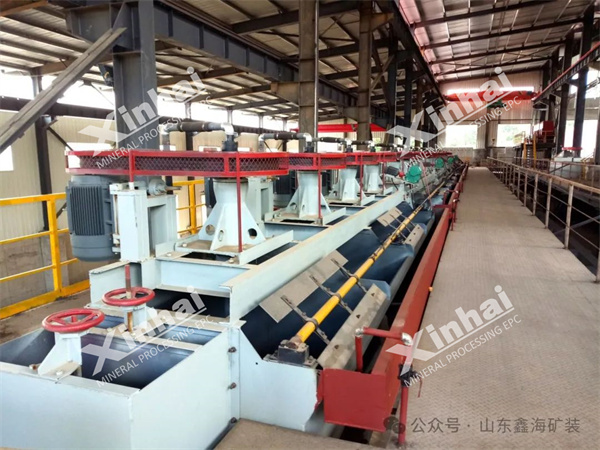There are many impurities and gangue minerals in the primary phosphate ore. In order to improve the grade of phosphate concentrate and obtain raw materials that can be used in industry, agriculture, chemical industry, medicine and other industries, it is necessary to carry out mineral processing and purification, and flotation is a commonly used method of mineral processing and purification. The flotation effect of phosphate ore is affected by many factors, and the following are three key factors.
The physical and chemical properties of phosphate rock itself, mineral composition, etc. are important factors affecting the flotation effect. We analyze from three aspects: particle size distribution, mineral composition and surface characteristics:
1.1. Particle size distribution: The particle size distribution of the ore can affect the flotation process by affecting the collision and attachment efficiency between particles and bubbles. Fine particles may have difficulty attaching to bubbles, thereby reducing the recovery rate.
1.2. Mineral composition: The different types and proportions of minerals present in the ore, such as apatite (the main phosphate mineral), gangue minerals (such as silicates, carbonates, etc.) and impurities, will affect the selection of appropriate flotation reagents and strategies. Different minerals may respond differently to flotation reagents, resulting in different separation efficiencies.
1.3. Surface characteristics: The surface characteristics of minerals, including their hydrophilicity (ability to interact with bubbles) or hydrophobicity (repellency to water), will affect their attachment to bubbles during flotation. Hydrophilic minerals tend to attach to bubbles and are recovered in a selective manner.

pH plays an important role in influencing the flotation process of phosphate ore. The pH of the flotation slurry affects the surface charge of the mineral, the solubility of the reagents, and the stability of the bubbles. Here are the ways how pH affects the flotation process:
2.1. Surface charge: pH affects the surface charge of the mineral. Many minerals have a pH-dependent surface charge due to the dissociation of their surface functional groups. Changing the pH can change the charge, thereby affecting the interaction between the mineral and the flotation reagents.
2.2. Reagent solubility: The solubility of flotation reagents (such as collectors and depressants) changes with pH. Maintaining the proper pH helps maintain the effectiveness of the reagents and keep them in solution, thereby achieving better flotation performance.
2.3. Bubble stability: pH affects the stability of the bubbles generated during the flotation process. Maintaining the proper pH range helps maintain stable bubbles, which helps separate mineral particles from the slurry.
Ore dressing reagents can float another mineral by suppressing the activity of certain minerals, and play an important role in the flotation order. The type and dosage of flotation reagents are also crucial. We analyze them from two aspects: metering control and reagent combination:
3.1. Dosage control: The amount of reagents added to the flotation slurry must be precisely controlled. Too little reagent may lead to poor mineral recovery, while excessive reagents may lead to increased costs and environmental problems.
3.2. Reagent combination: The combination of different reagents and their dosage is a complex optimization process. The interaction between various reagents may affect flotation performance and separation selectivity.
In the flotation process of phosphate ore, reagents such as collectors, depressants, activators and pH regulators are usually used. The choice of reagents depends on the type of phosphate mineral. For example, common phosphate ore collectors include fatty acids, amine compounds and quaternary ammonium compounds. In phosphate ore flotation, depressants may be used to suppress gangue minerals or other minerals that do not need to be floated. Commonly used depressants include sodium silicate and sodium carbonate. Activators can be used to selectively activate valuable minerals that may not be easy to float. In phosphate rock flotation, activators can be used to improve the flotation performance of phosphate minerals.
Flotation technology is widely used in the process of phosphate ore dressing. Good flotation effect is due to the correct planning of flotation scheme, correct selection and reasonable dosage of flotation reagents. Only by adjusting all factors in place can the flotation effect of phosphate ore, the grade of phosphate concentrate and the recovery rate of ore dressing be ensured.